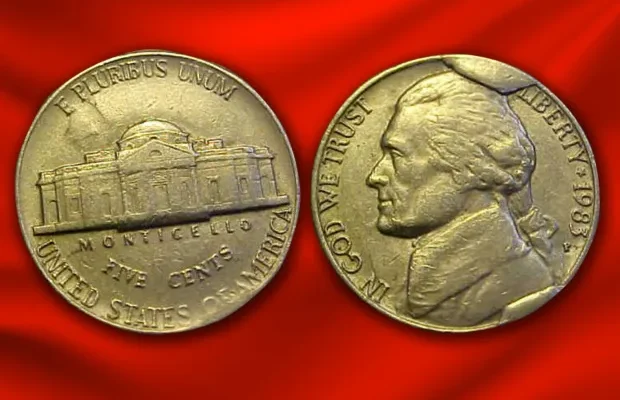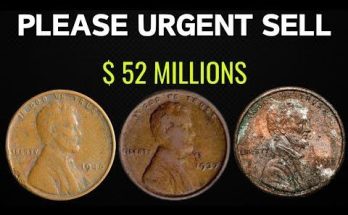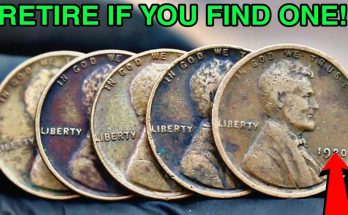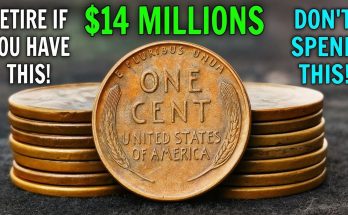The 1983 nickel contains multiple errors that make it extremely rare and drive up its value.
Most noticeably, the face or obverse side of the coin contains two clear cud errors, which are damages or breaks on a coin.
The coin features clear cud errors above and below Jefferson’s profile.
“Cuds can assume a wide variety of shapes including ovoid, crescentic, and irregular,” coin glossary website Error-Ref.
In addition, the coin contains a doubled die error, although it is less apparent than the cud breaks.
Coin dies – the metal pieces used to imprint emblems on coins – typically strike coins multiple times to ingrain the image or text.
Doubled die errors occur when the die for one side of the coin is misaligned after the first strike and leaves out-of-place markings.
On this coin and some nickels produced in Philadelphia in 1983, the letters around Jefferson’s head appear slightly doubled because of a die error.
The seller initially listed this coin at $19.99, but because of its rarity and pair of unique errors, bidders quickly drove the price up.
After 14 offers, the coin sold for $160.50.
Since coins containing both cud and doubled die errors are in such short supply, most official coin appraisers don’t have price guides listed.
However, other 1983-P Jefferson nickels containing cud errors alone have sold on eBay for upwards of $60.
What other Jefferson nickels are valuable?
If you don’t have that particular coin, there are other Jefferson pieces that can be worth in the hundreds as well.
Like the 1983 cud error coin, almost all of the most valuable five-cent pieces are error coins.
These include the Henning Jefferson nickel, one of which recently sold for $425 at auction.
Henning nickels feature a crack on the lower part of the letter “R” in the word “Pluribus” on their reverse side.
While these are counterfeit, coin collectors value them today due to their iconic history.
Another Jefferson error piece with an embedded copper error on the reverse sold for more than $300.
In addition, The Sun covered a 1984 Jefferson coin mistakenly embedded with copper that sold for $150.
To see if your spare change is worth anything, you can check eBay by searching the full name of the coin, selecting the “sold” listing, and then toggling the search to “highest value”.
This way, you’ll get a sense of what collectors are willing to pay for your coins.
You can also check price estimates on appraisal sites like USA Coin Book or PCGS.
We explained the value of rare quarters half dollars, dimes, and pennies.
And for more error coins, a doubled die Lincoln penny recently sold for $2,100.





